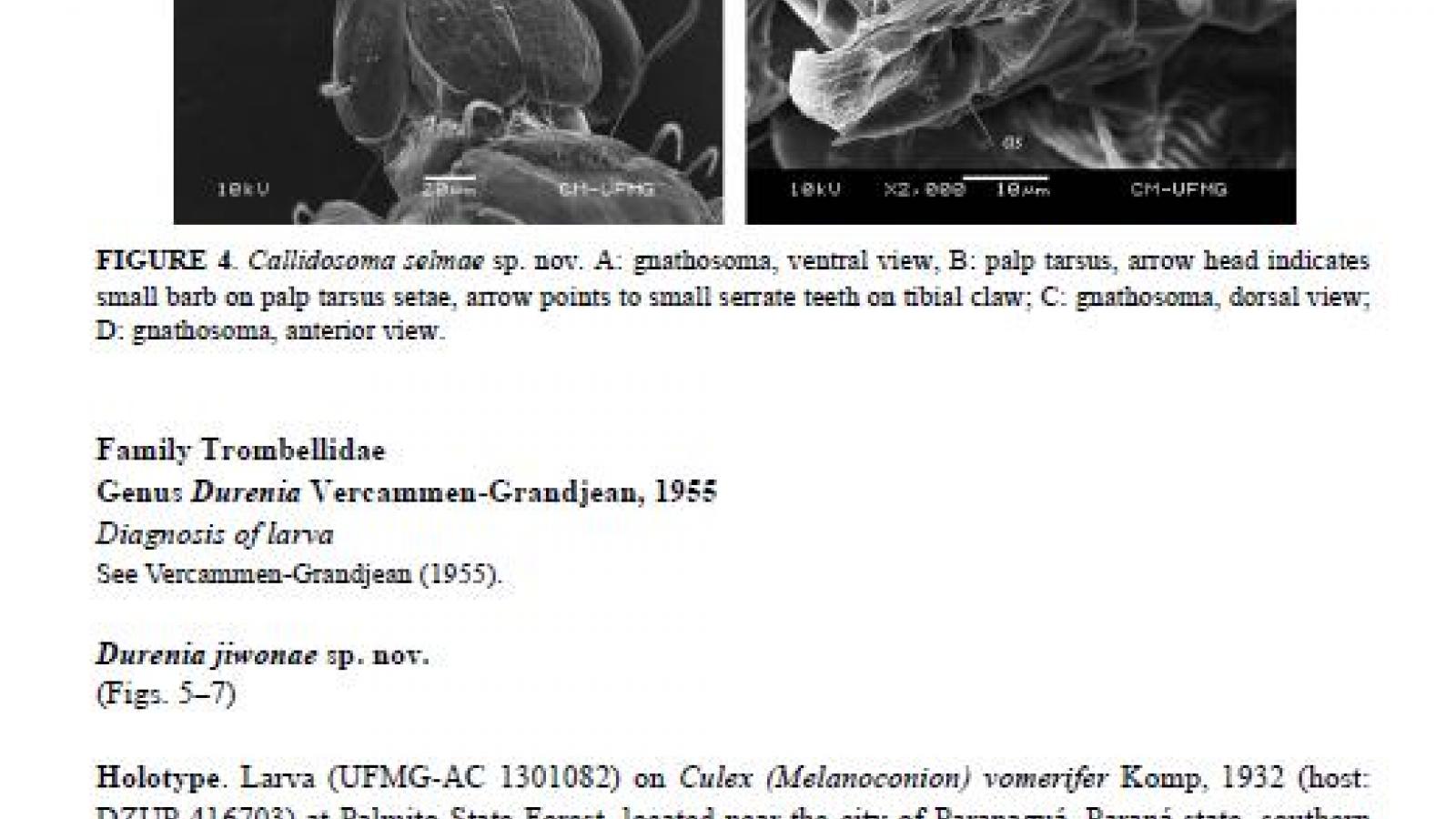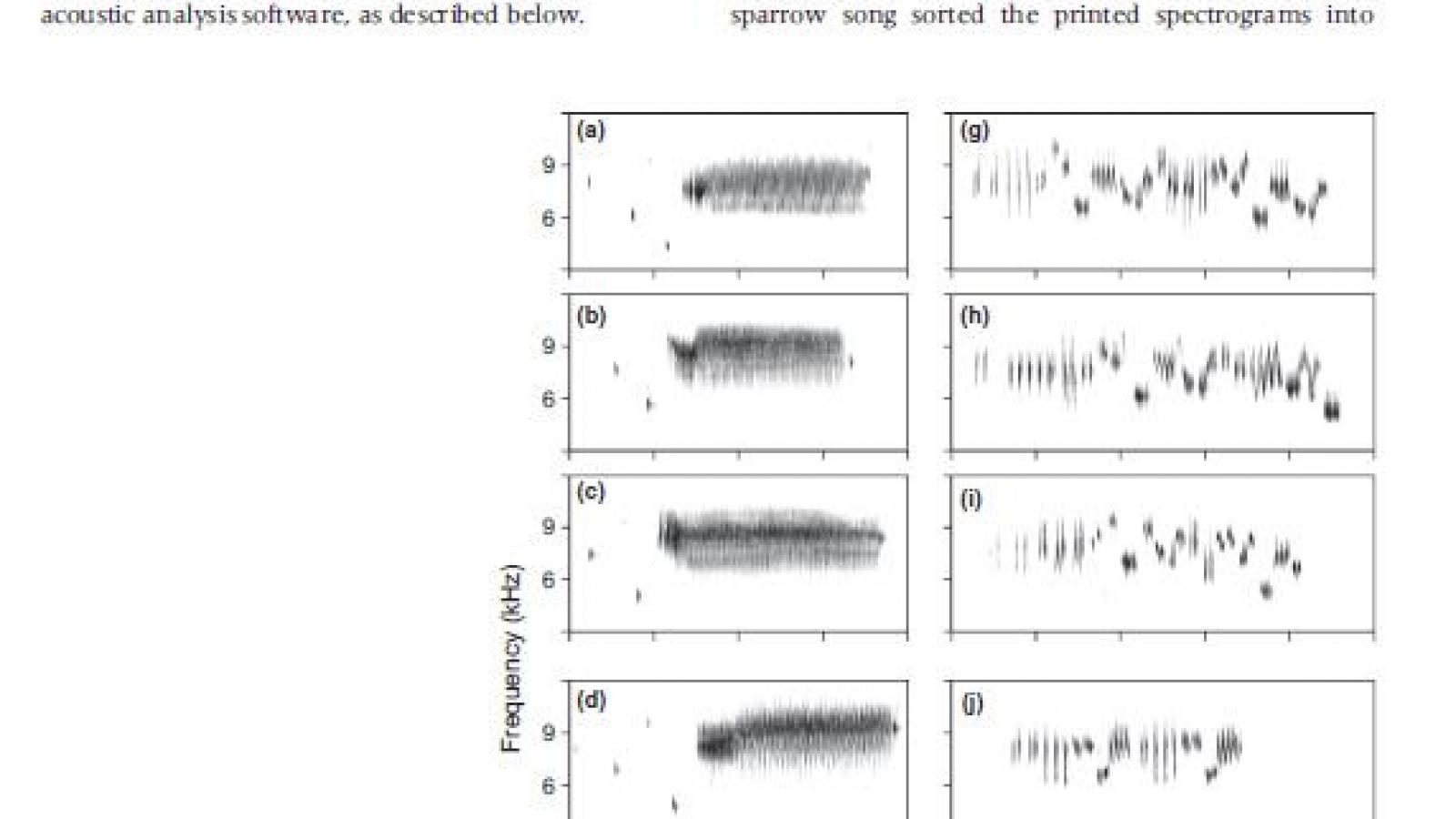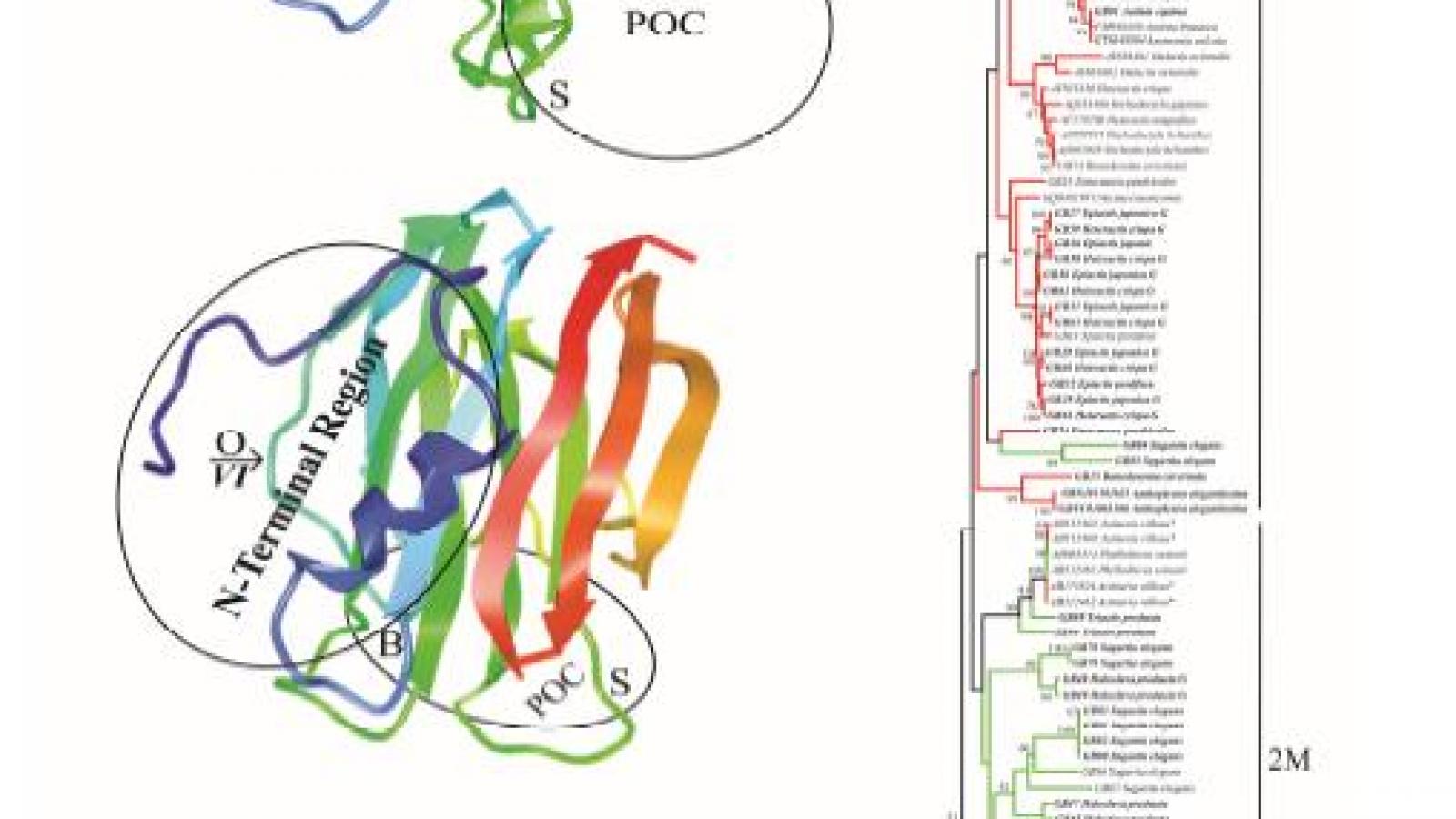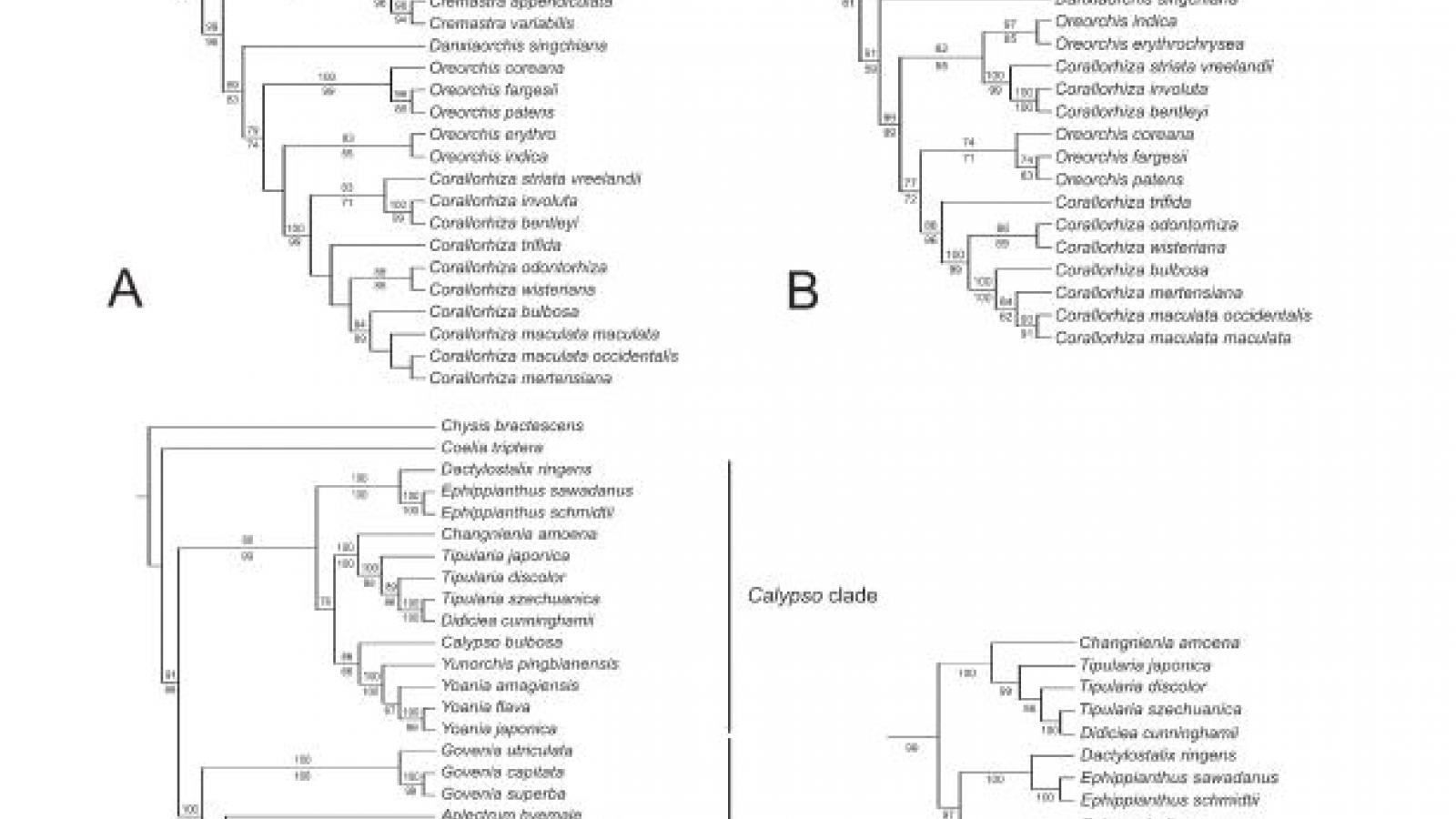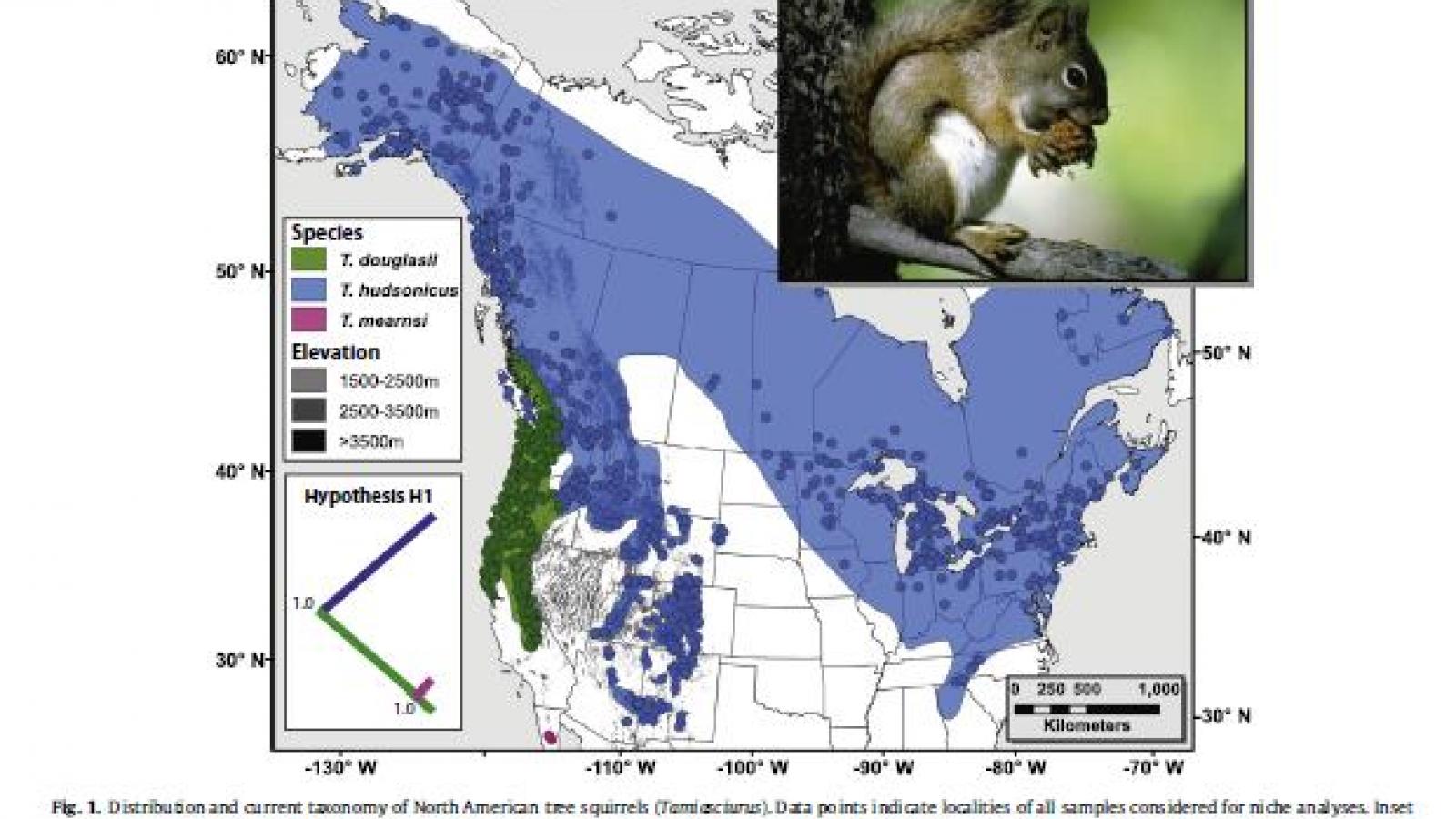Talamas, EJ, Johnson, NF, Buffington, ML, & Ren, D (2017) Archaeoteleia Masner in the Cretaceous and a new species of Proteroscelio Brues (Hymenoptera, Platygastroidea). Journal of Hymenoptera Research, 56, 241.
Talamas, EJ, Thompson, J, Cutler, A, Schoenberger, S. F., Cuminale, A., Jung, T., Johnson, N. F., Valerio, A.A., Smith, A.B., Haltermann, V. & Alvarez, E. (2017). An online photographic catalog of primary types of Platygastroidea (Hymenoptera) in the National Museum of Natural History, Smithsonian Institution. Journal of Hymenoptera Research, 56, 187.
Popovici, O. A., Vilhelmsen, L., Masner, L., Mikó, I, &
Johnson, N.F. (2017).
Maxillolabial complex in scelionids (Hymenoptera: Platygastroidea): morphology and phylogenetic implications.
Nesheim, K.C., Masner, L.,
Johnson, N.F. (2017) The
Phanuromyia galeata species group (Hymenoptera, Platygastridae, Telenominae): shining a lantern into an unexplored corner of Neotropical diversity. ZooKeys 663: 71-105.
Seltmann, K.C., Cobb, N.S.,Gall, L.F., Bartlett, C.R., Basham, M.A., Betancourt, I., Bills, C., Brandt, B., Brown, R.L., Bundy, C., ..., Caterino, M.S. (2017). LepNet: The Lepidoptera of North America Network. Zootaxa 4247(1):73-7.
Chen, H. Y., Masner, L., & Johnson, N. F. (2017). New World species of the genus Calliscelio Ashmead (Hymenoptera, Platygastridae, Scelioninae). ZooKeys, 648, 1.
Gusmão L. C., Brandão R. A. & Daly M. (2016). Edwardsia migottoi sp. nov., the first sea anemone species of Edwardsia de Quatrefages 1842 (Anthozoa: Actiniaria: Edwardsiidae) from the Southwestern Atlantic. Mar Biodiv. 2016:1-1. doi:10.1007/s12526-016-0585-z
Larson P. G. & Daly M. (2016). Phylogenetic analysis reveals an evolutionary transition from internal to external brooding in Epiactis Verrill (Cnidaria: Anthozoa: Actiniaria) and rejects the validity of the genus Cnidopus Carlgren. Mol. Phylo. Evol. 94:548-58.
Macrander J. & Daly M. (2016). Evolution of the cytolytic pore-forming proteins (actinoporins) in sea anemones. Toxins. 8(12): 368.
Macrander J., Broe M. & Daly M. (2016). Tissue-specific venom composition and differential gene expression in sea anemones. Genome Biol. Evol. 8(8): 2358-75.
Murray A. E., Rack F. R., Zook R., Williams M. J., Higham M. L., Broe M., Kaufmann R. S., & Daly M. (2016). Microbiome composition and diversity of the ice-dwelling sea anemone, Edwardsiella andrillae. Integ. Comp. Biol. 56 (4): 542-555. doi: 10.1093/icb/icw095.
Folk, R. A., Mandel, J. R., & Freudenstein, J. V. (2017). Ancestral gene flow and parallel organellar genome capture result in extreme phylogenomic discord in a lineage of angiosperms. Systematic biology, 66(3), 320-337.
Braukmann, T. W., Broe, M. B., Stefanović, S., & Freudenstein, J. V. (2017). On the brink: the highly reduced plastomes of nonphotosynthetic Ericaceae. New Phytologist, 216(1), 254-266.
Freudenstein, J. V., Yukawa, T., & Luo, Y. B. (2017). A reanalysis of relationships among Calypsoinae (Orchidaceae: Epidendroideae): floral and vegetative evolution and the placement of Yoania. Systematic Botany, 42(1), 17-25.
Folk, R. A., Visger, C. J., Soltis, P. S., Soltis, D. E., & Guralnick, R. P. (2017). Geographic range dynamics drove ancient hybridization in a lineage of angiosperms. bioRxiv, 129189.
Stuessy, T. F., & Ruiz, E. (Eds.). (2017). Plants of Oceanic Islands: Evolution, Biogeography, and Conservation of the Flora of the Juan Fernández (Robinson Crusoe) Archipelago. Cambridge University Press.
Krishnarjuna, B., MacRaild, C.A., Sunanda, P., Morales, R.A., Peigneur, S., Macrander, J., Heidi, H.Y., Daly, M., Raghothama, S., Dhawan, V. and Chauhan, S., 2017. Structure, folding and stability of a minimal homologue from Anemonia sulcata of the sea anemone potassium channel blocker ShK. Peptides.
Daly, M., Crowley, L. M., Larson, P., Rodríguez, E., Saucier, E. H., & Fautin, D. G. (2017). Anthopleura and the phylogeny of Actinioidea (Cnidaria: Anthozoa: Actiniaria). Organisms Diversity & Evolution, 1-20.
Daly, M. (2017). Functional and genetic diversity of toxins in sea anemones. Evolution of Venomous Animals and Their Toxins, 87-104.
O’Leary, M. A., Alphonse, K., Arce, H., Cavaliere, D., Cirranello, A., Dietterich, T., Daly, M. ... & Reft, A. (2017). Crowds Replicate Performance of Scientific Experts Scoring Phylogenetic Matrices of Phenotypes. Systematic Biology.
Titus, B. M., Vondriska, C., & Daly, M. (2017). Comparative behavioural observations demonstrate the ‘cleaner’shrimp Periclimenes yucatanicus engages in true symbiotic cleaning interactions. Open Science, 4(4), 170078.
Titus, B. M., Daly, M., Macrander, J., Del Rio, A., Santos, S. R., & Chadwick, N. E. (2017). Contrasting abundance and contribution of clonal proliferation to the population structure of the corkscrew sea anemone Bartholomea annulata in the tropical Western Atlantic. Invertebrate Biology, 136(1), 62-74.
Titus, B. M., & Daly, M. (2017). Specialist and generalist symbionts show counterintuitive levels of genetic diversity and discordant demographic histories along the Florida Reef Tract. Coral Reefs, 36(1), 339-354.
Mercier, A., Baillon, S., Daly, M., Macrander, J., & Hamel, J. F. (2017). Biology of a deep-water sea anemone (Anthozoa: Actiniidae) from eastern Canada: Spawning, development, and growth. Deep Sea Research Part II: Topical Studies in Oceanography, 137, 359-367.
Titus, B. M., Palombit, S., & Daly, M. (2017). Endemic diversification in an isolated archipelago with few endemics: an example from a cleaner shrimp species complex in the Tropical Western Atlantic. Biological Journal of the Linnean Society.
Watters, G.T. 2017. A preliminary review of the nominal genus Villosa of freshwater mussels (Bivalvia, Unionidae) in North America. Visaya, Suppl. 10. 139 pp. 35 pls.
Watters, G.T. 2017. A review of Weinlandipoma (Gastropoda, Littorinoidea, Annulariidae) from the Tiburon Peninsula of Hispaniola: imperiled local endemics. Basteria 81(4-6): 65-89.
Watters, G.T. and P. Larson. 2017. A revision of the Hispaniolan genera Chondropomella, Chondropomium, and Clydonopoma (Gastropoda: Annulariidae), with the recognition of a new genus, Superbipoma: phylogenetic, radular, and conchological evidence. Nautilus 131: 163–201.
Williams, J.D., Bogan, A.E., Butler, R.S., Cummings, K.S., Garner, J.T., Harris, J.L., Johnson, N.A. and G. T. Watters. 2017. A revised list of the freshwater mussels (Mollusca: Bivalvia: Unionida) of the United States and Canada. Freshwater Mollusk Biology and Conservation 20(2): 33-58.
Watters, G.T. & C. Frank-Fellner. 2017. A new species of Annulariidae from eastern-most Hispaniola (Gastropoda, Littorinoidea). Journal of Conchology 42: 531-534.
Roznere, I., Watters, G. T., Wolfe, B. A., & Daly, M. (2017). Effects of relocation on metabolic profiles of freshwater mussels: Metabolomics as a tool for improving conservation techniques. Aquatic Conservation: Marine and Freshwater Ecosystems. DOI: 10.1002/aqc.2776
Weber, A.M., Bauer, J.E., Watters, G.T. (2017). Assessment of Nutritional Subsidies to Freshwater Mussels Using a Multiple Natural Abundance Isotope Approach. Freshwater Biology 62: 615-629.
Hope, A. G., Malaney, J. L., Bell, K. C., Salazar-Miralles, F., Chavez, A. S., Barber, B. R., & Cook, J. A. (2016). Revision of widespread red squirrels (genus: Tamiasciurus) highlights the complexity of speciation within North American forests. Molecular phylogenetics and evolution, 100, 170-182.
Pomento, A. M., Perry, B. W., Denton, R. D., Gibbs, H. L., & Holding, M. L. (2016). No safety in the trees: local and species-level adaptation of an arboreal squirrel to the venom of sympatric rattlesnakes. Toxicon, 118, 149-155.

